Whether you’re buying towels for personal use or running a towel business, understanding the materials of towels is crucial. There are various raw materials used in making towels. Today’s blog lists the most common types of towel fabrics along with pictures.
The most common 4 natural & ecological towel materials.
Cotton towels
Cotton towels are the most common type due to their softness, good absorbency, and comfort. Natural cotton exhibits good moisture absorption, hygiene, and heat resistance, and it’s easy to achieve a fluffy towel texture. Cotton towels are suitable for various purposes, such as face washing, bathing, kitchen cleaning, and more.
For individuals with sensitive skin, it’s better to choose towels made of organic cotton, which is free from pesticides and chemical treatments. Additionally, note that the cotton processing has a low threshold, to the point where it can be made from shredded old clothes. Such cotton towels are prone to shedding.
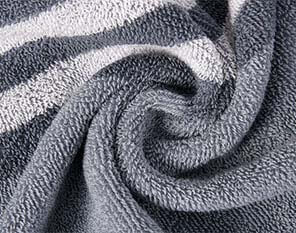
Bamboo fiber towels
Bamboo fiber is another popular towel material. It is a natural fiber extracted from naturally grown bamboo, known for its superior antibacterial properties and moisture-wicking breathability compared to cotton. For instance, bamboo fiber has 3.5 times the breathability of cotton, earning it the title of the “breathable fiber queen”.
Additionally, bamboo fiber is softer than pure cotton, and the perceived temperature is typically 3-4℃ lower than regular cotton materials. Towels made of bamboo fibers are particularly suitable for individuals who sweat a lot, providing a cooler experience during the summer.
Despite these advantages, the extraction process of bamboo fiber is more complex than cotton, making bamboo fiber towels more expensive than regular cotton towels. Moreover, I can tell you that most bamboo fiber towels are not made entirely of 100% bamboo fiber. Because 100% bamboo fiber is more prone to damage. To address this issue, towel manufacturers often blend bamboo fiber with cotton, such as 70% bamboo fiber and 30% cotton blend.

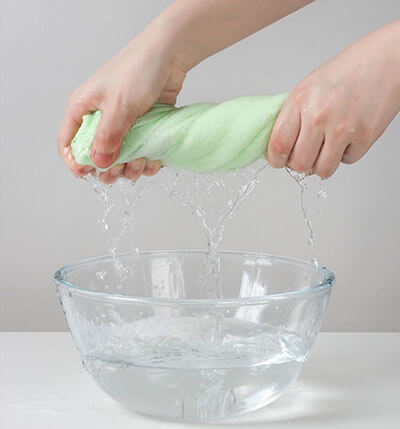
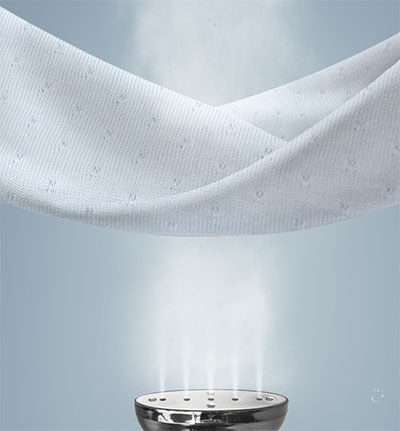
Wood fiber towels
Similar to bamboo fiber, wood fiber towels possess antibacterial, antimicrobial, and excellent water absorption properties.
Both of these fiber materials have towels with stronger oil removal and cleaning capabilities compared to cotton towels. Because oil stains adhere to the surface of cotton products and are challenging to clean. In contrast, when fibers come into contact with water, they naturally separate from oil stains, making the cleaning of oil stains effortless. Wood fiber towels are particularly suitable for kitchen use, such as washing dishes.
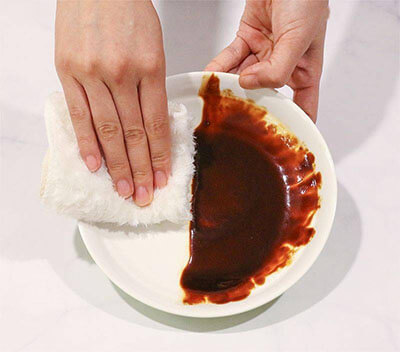
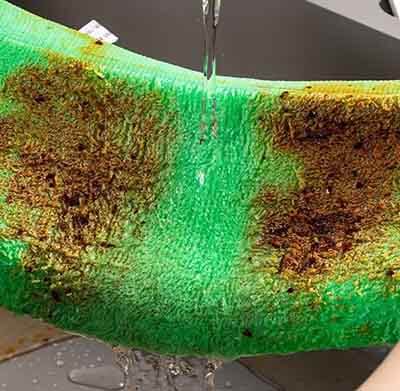
In short, fiber towels outperform cotton towels in terms of water absorption. Additionally, fiber towels are easier to clean after getting oily. However, after a period of use and washing, fiber towels may become stiff; this is also true for pure cotton towels, although they tend to fare better in this aspect. Consequently, the breathability and instantaneous water absorption of towels will gradually decrease over time.
Linen towels
Linen towels, although not as soft as pure cotton towels, boast excellent moisture absorption and breathability, suitable for summer use. Linen also possesses antibacterial properties and is highly durable. It’s common to see linen towels for use in the kitchen and on dining tables, ideal for wiping plates, cups, and utensils.
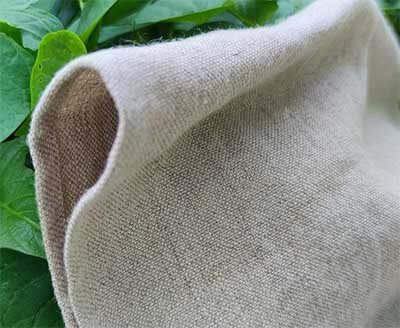

Five types of synthetic fibers commonly seen in towels.
Polyester towels
Polyester towels are resistant to fading and shedding, offering better strength and reduced shrinkage compared to natural fibers. However, they are prone to static electricity. This characteristic makes them effective at attracting and wiping away dust.
Nevertheless, the feel of 100% polyester fiber towels may not be as soft, and their absorbency is slightly lower. Typically, towel manufacturers blend them with cotton to enhance the softness and absorbency of the towels.
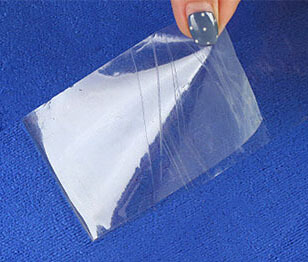
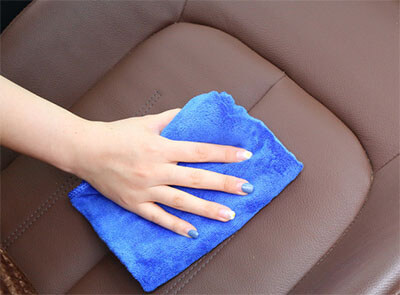
Microfiber towels
Microfiber is a modern and high-tech material used in towels. This ultra-fine fiber is a blend of polyester and nylon, usually 80% polyester and 20% nylon. Its diameter is approximately 1/200th of a hair strand. Microfiber fabric features its softness, non-shrinkage, non-shedding, and colorfast properties.
Moreover, microfiber towels exhibit superior absorbency and durability compared to cotton towels, suitable for various tasks such as drying hair, washing cars, cleaning dishes, floors, windows, and more. A quality microfiber towel can maintain its water-absorbing capabilities for at least six months.
However, microfiber tends to be relatively expensive and often applies to the production of premium bath towels, blankets, and other high-end products.
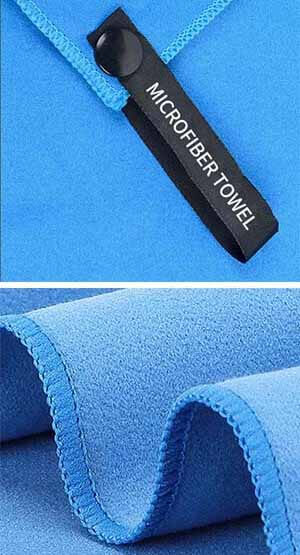
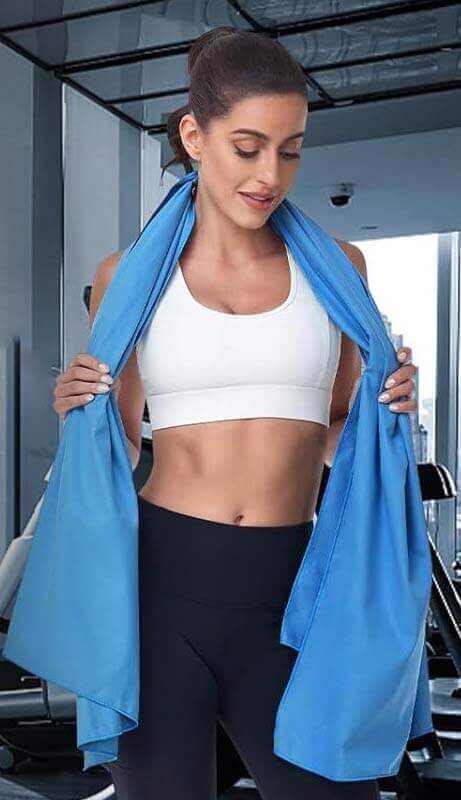
Coral fleece/coral velvet towels
Coral fleece towels are also made from a blend of polyester and nylon. Overall, coral fleece towels and microfiber towels share similar advantages and apply to similar scenarios.
Strictly speaking, in terms of absorbency, coral fleece towels are slightly less effective than microfiber towels because microfiber is finer. In terms of price, coral fleece towels are more affordable than microfiber towels.
High-quality coral fleece has a neat and smooth pile, without uneven heights or stray fibers. It feels silky, smooth, and soft to the touch.

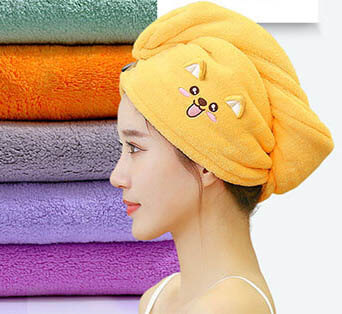
Rayon towels
Rayon is a synthetic chemical fiber known for its absorbency and anti-static properties. It often applies to disposable towel items like face towels and compressed towels. Note that some people may be allergic to rayon, leading to symptoms such as skin itching, redness, etc. Individuals with such sensitivities should avoid using rayon towels.

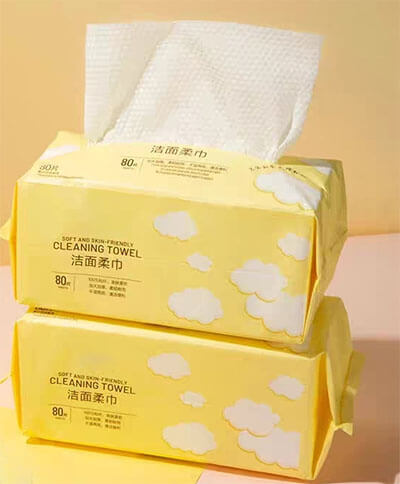
Non-woven fabric towels
Non-woven fabric towels, whether dry or wet, are disposable. These towels are made by physically bonding polyester and viscose fibers without the need for spinning and weaving. While they are non-toxic and odorless, they are not very durable, usually seen in one-time-use towel products.
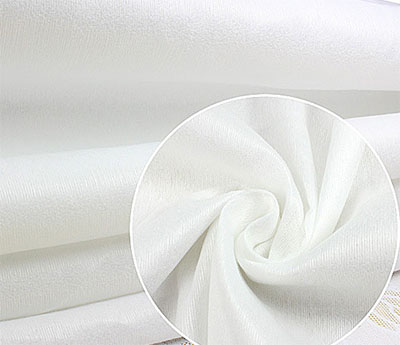
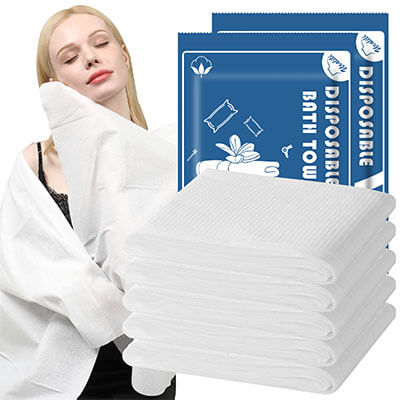
Three points to consider when choosing towel fabrics.
Towel fabric weight
Towel fabric weight is measured in grams per square meter (GSM). The higher the GSM, the thicker and more absorbent the towel. For everyday use, it is recommended to have a towel with a weight of at least 350 GSM or higher.
Towel comfort and color
A quality towel should feel exceptionally soft and comfortable, with vibrant colors. Towels with faded colors typically indicate simpler craftsmanship and poor material quality.
Towel fabric processing technology and details
The fabrics plus textile processing techniques affect the comfort of towels. Take dyeing techniques for example. Towels using natural plant dyes rather than conventional chemical dyes are safer and gentle on the skin. Modern consumers show a preference for such towels.
Additionally, pay attention to the details of towels, such as the strength of the edges, smoothness, and delicate weave patterns. These details contribute to the texture and durability of the towel.
As a leading sourcing company, JingSourcing provides a wide range of towel types available in the market. Tell us your needs for towel fabrics and types. We can offer you the most competitive towel price and our MOQ is friendly to startups and small businesses.
If you want to create your private label brand, we can also assist you in designing unique patterns and logos and selecting the most appropriate printing techniques for your towels.

Leave A Comment